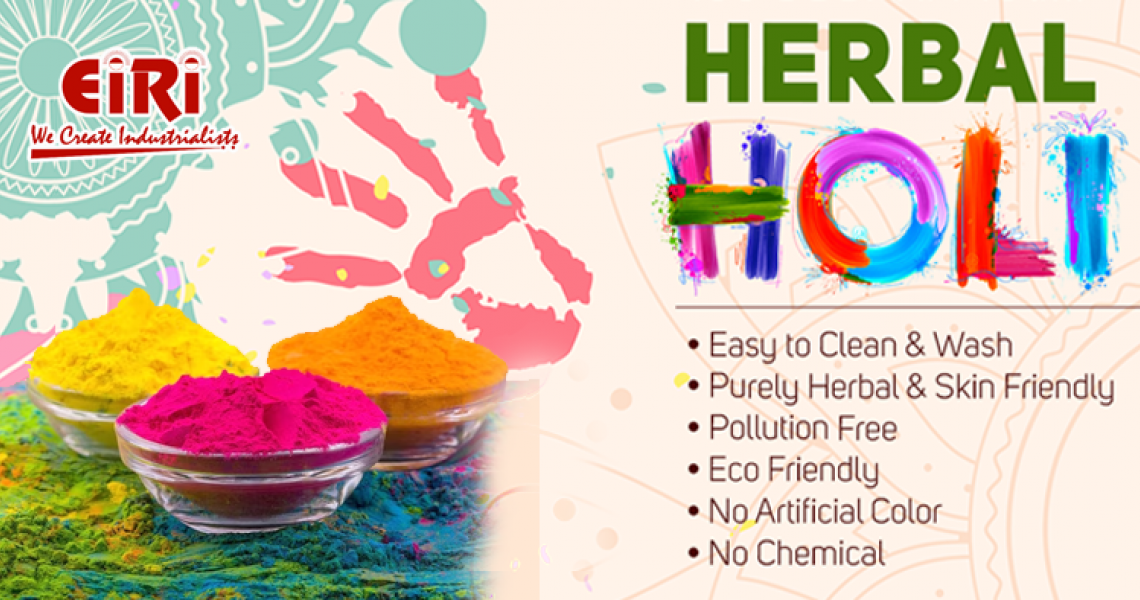Organic Herbal Gulal Manufacturing Business - Current Market Overview and Future Growth Prospects

Holi is an old and special celebration for Hindus. It is like a holiday in many places in India and Nepal, and some other countries also have special days for it. Holi is a fun celebration where people, whether they are Hindu or not, can play and joke with each other. They throw colored water and powder during the celebration. It happens in many parts of India and nearby countries.
Gulal, also known as Abeer, is the traditional name given to the coloured powders used for the typical Hindu rituals, in particular for the Holi festival.
Holi is a way to welcome the spring season and say goodbye to winter. It is celebrated on the last full moon day of the Hindu calendar month, which changes each year with the moon. Usually, it falls in March, but sometimes it's in late February on the regular calendar. The date changes, making Holi a surprise each year. People enjoy the festival, and it brings joy and laughter to communities.
Holi holds cultural and religious significance as it symbolizes the end of winter and the arrival of spring. The celebration takes place on the last full moon day of the Hindu luni-solar calendar month. Due to its connection with the lunar cycle, the date of Holi varies each year. Typically, it falls in the month of March, although occasionally it may occur in late February according to the Gregorian calendar. This dynamic timing adds to the uniqueness of Holi, making it a joyous and unpredictable festival celebrated with enthusiasm across communities and cultures.
As the vibrant festival of Holi approaches, the demand for organic gulal, the colorful powder integral to the celebration, is on the rise. This presents a unique business opportunity for those considering venturing into the organic gulal manufacturing sector.
In this guide, we'll explore the market overview, potential growth, and key considerations for establishing a successful organic gulal manufacturing business.
Market Overview of Herbal-Organic Gulal
- Eco-Friendly Appeal: Organic gulal is crafted from natural ingredients, free from harmful chemicals and synthetic dyes. This appeals to environmentally conscious consumers seeking sustainable and biodegradable options for their festivities.
- Rising Health Awareness: Traditional gulal often contains artificial colors that may cause skin irritations. The demand for organic alternatives is driven by health-conscious consumers who prioritize natural, plant-based ingredients that are gentle on the skin.
- Cultural Significance: Holi holds immense cultural significance in India, and the celebration has expanded globally. This cultural export presents an opportunity to tap into a diverse market, not limited to geographical boundaries.
Manufacturing Process of Herbal Organic Gulal
- Selection of Natural Ingredients: The first step involves selecting natural ingredients such as flowers, herbs, vegetables, and plant extracts that can provide vibrant colors. Common choices include hibiscus, marigold, indigo, turmeric, and beetroot.
- Drying and Powdering: Once the natural ingredients are selected, they are thoroughly cleaned and dried. After drying, these materials are ground into a fine powder to create the base for the colored gulal.
- Mixing and Formulation: The powdered natural ingredients are then mixed in specific proportions to achieve the desired colors. Depending on the recipe, additional natural elements like rice flour or arrowroot powder may be added to enhance the texture and adherence of the gulal.
- Sifting and Quality Control: The mixture is sifted to ensure a smooth and fine consistency. This step helps remove any coarse particles, resulting in a soft and easily spreadable powder. Quality control measures are implemented to maintain color consistency and adherence to safety standards.
- Drying Process: The colored mixture is spread out and left to dry naturally. Sun drying is a common method, allowing the powders to retain their vibrancy while eliminating any residual moisture.
- Packaging: Once thoroughly dried, the herbal gulal is packaged into eco-friendly containers, emphasizing sustainability. Labels may be added to communicate the natural and organic aspects of the product.
- Quality Assurance: Before the herbal gulal reaches the market, it undergoes quality assurance checks to ensure it meets safety standards, is free from contaminants, and retains its vibrant colors.
| Color | Raw Material | Process |
|---|---|---|
| Red | Hibiscus petals or beetroot | Drying and powdering hibiscus petals or extracting color from beetroot |
| Yellow | Turmeric or marigold flowers | Drying and powdering turmeric rhizomes or marigold petals |
| Green | Henna or spinach | Drying and powdering henna leaves or spinach |
| Blue/Indigo | Indigofera plant | Extracting color from indigo leaves |
| Purple | Blueberries or grapes | Drying and powdering blueberries or grapes |
| Orange | Saffron or orange peel | Drying and powdering saffron or orange peel |
| Brown | Walnut shells or tea leaves | Drying and powdering walnut shells or tea leaves |
| Pink | Rose petals | Drying and powdering rose petals |
Key Considerations for Starting an Organic Gulal Manufacturing Business:
- Raw Material Sourcing: Identify reliable sources for organic raw materials such as plant-based colors, flowers, and herbal extracts. Ensure they meet quality standards and adhere to safety regulations.
- Formulation and Innovation: Invest time in developing unique formulations that offer vibrant and long-lasting colors. Experiment with innovative combinations of natural ingredients to set your organic gulal apart in the market.
- Compliance and Certification: Obtain necessary certifications for organic and eco-friendly products. Adhering to quality standards and obtaining certifications enhances consumer trust and widens your market reach.
- Packaging and Branding: Design eco-friendly and visually appealing packaging that reflects the essence of your brand. Emphasize the organic and natural aspects in your branding to resonate with environmentally conscious consumers.
- Marketing and Distribution: Develop a robust marketing strategy that leverages digital platforms and social media to reach a wider audience. Collaborate with local retailers, online marketplaces, and Holi event organizers for effective distribution.










